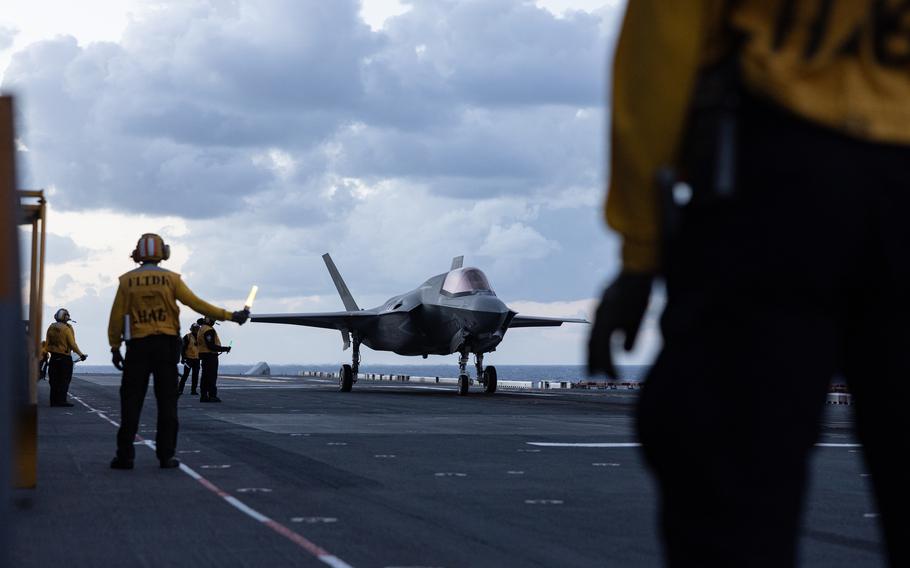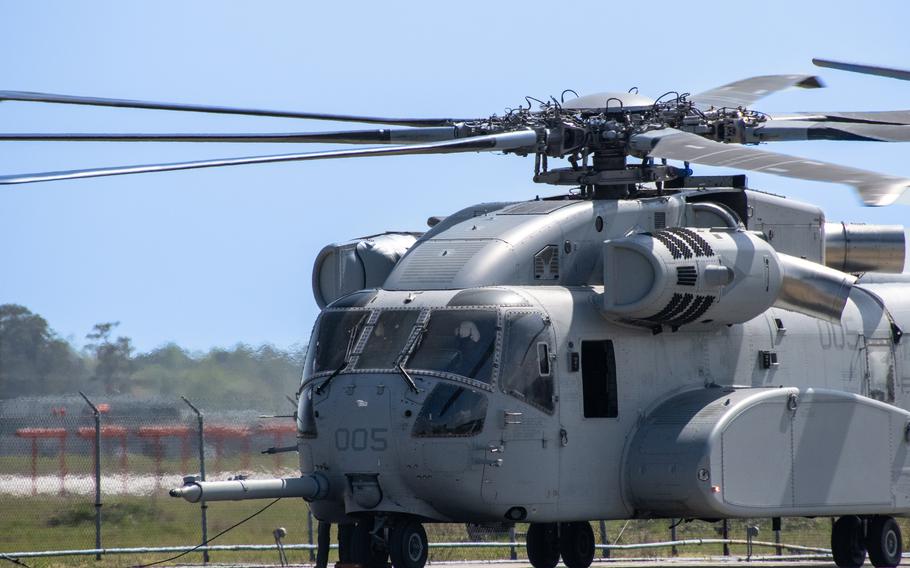
A Marine Corps F-35B Lightning II prepares to take-off during flight operations aboard the amphibious assault ship USS America in the Coral Sea on June 19, 2025. (U.S. Marine Corps)
WASHINGTON — The Marine Corps’ 2026 budget proposes spending billions of dollars in upgrades for new aircraft, new technology and improved housing facilities, continuing the service’s multiyear modernization effort.
The service’s $57.2 billion budget request is part of the Navy’s $292.2 billion overall proposed spending plan for fiscal 2026, which begins Oct. 1. The budget request reflects a more than 6% increase from the 2025 request.
“These efforts ensure that the Marine Corps is prepared to operate inside actively contested maritime spaces in support of fleet and joint force operations,” according to the Navy budget documents released Thursday.
The request builds on the prior year by continuing to prioritize the Marines’ Force Design 2030 program, a long-term plan for the service to modernize and adapt for future warfare environments

A CH-53K King Stallion arrives for routine maintenance on April 4, 2025, at Marine Corps Air Station New River, N.C. (Heather Wilburn, Fleet Readiness Center East)
The overall Navy budget proposes $17.1 billion for 43 new aircraft, 28 of which will go to the Marine Corps. One dozen CH-53K heavy-lift helicopters, and 15 F-35 fighter jets are planned for the Marines, according to the budget documents. Additionally, the service is asking for one utility aircraft typically used to transport passengers and cargo.
The proposed budget also includes $3.8 billion for amphibious combat vehicles, tactical vehicles and medium range intercept capability systems. The Navy further supported the needs of the Marine Corps by including a request to purchase nine new medium landing ships meant to transport Marines and their equipment in 2026, a change to a previous plan to purchase the ships one or two at a time in the next four years.
“Ongoing efforts to create and sustain warfighting advantage over the long term will ensure the fleet Marine force remains organized, trained and equipped to succeed in an ever-evolving operational environment, regardless of time or place, maintaining its role as America’s premier expeditionary force-in-readiness, deterring adversaries and responding to crises globally,” the budget document read.
The Marine Corps also plans to direct a substantial amount of funding to personnel issues, and the budget proposes a 3.8% raise for service members across the Navy and Marine Corps.
Another $3.4 billion is requested for the restoration and modernization of facilities as part of the Marine Corps’ Barracks 2030 initiative, a quality-of-life effort in which the service is inspecting every barracks facility in its inventory and hopes to bring them all up to standard by 2030. The funding includes $495 million for the demolition of failing facilities.
“The [fiscal] 2026 budget continues to emphasize the recapitalization and demolition in the near-term, with the priority going towards the Barracks Initiative, as the deferred maintenance backlog cannot be reduced via sustainment,” the budget document read.
Navy Secretary John Phelan was left “appalled” and “very upset” in May when he visited derelict barracks at Andersen Air Force Base in Guam that housed Marines and sailors. Phelan initially believed the barracks, with exposed wires and deteriorating walls, to be abandoned. He subsequently ordered a 300-room facility at the nearby Marine Corps Base Camp Blaz to open a few weeks early, moving 25 Marines and 48 sailors to the new barracks.